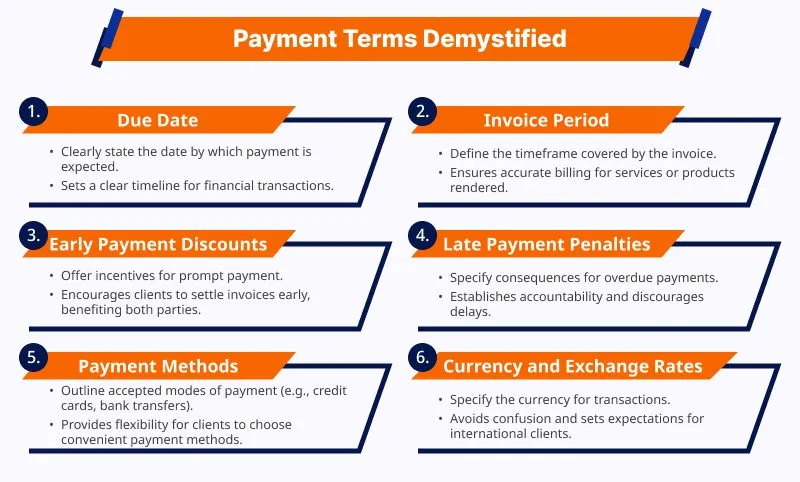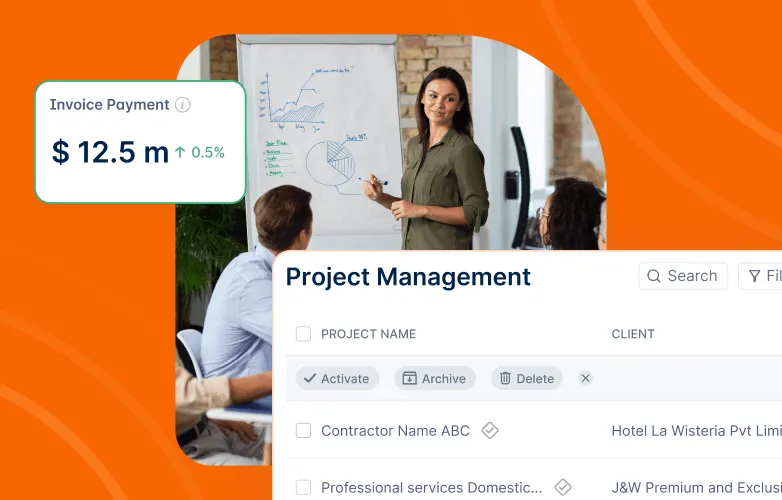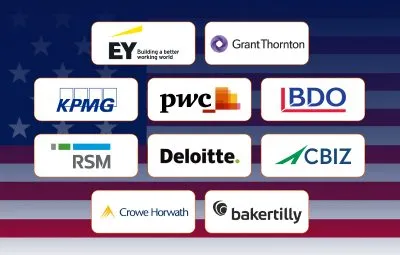Introduction
Have you ever felt disappointed when something didn’t go well with a project because everyone wasn’t on the same page? Client contracts are the secret tool to avoid this kind of problem. A good contract isn’t just legal words – it’s a map for a smooth and successful working relationship with your clients.
To help you lay the foundation right, we will discuss the right and easy way to make a client contract in 10 simple steps. We’ll walk you through everything – from outlining what the project covers to handling changes and money terms. In the end, you’ll feel confident making contracts that protect your business and keep clients happy.
So, let’s get started and make sure your next project is a win for everyone!
What Is A Client Contract?
A client contract protects both you and the client. It’s not just a formality. It’s a proactive step that outlines the agreed services, project timeline, and money details.
Think of it as a written agreement that reinforces the promises and duties of each party involved.
Key Elements To Include In A Client Contract
A good client contract is the foundation for a successful working relationship. It clearly states expectations for you and the client. This prevents misunderstandings and ensures a smooth project process.
But what should be included in this important document?
Here are the key elements to incorporate into your client contract:
- Client and Business Info: This section introduces the parties. Include the full legal names and contact details of your business and the client.
- Project Details: This is the core section. Clearly define the services you’ll provide. Outline the deliverables, milestones, and any limitations.
- Timelines: Set realistic deadlines. Include key milestones and a final delivery date.
- Payment Terms: Specify how and when you’ll get paid. Note the amount due, accepted payment methods, and late fees.
- Revisions Policy: Clarify which revisions are included. Outline the process for additional edits.
- Termination Terms: Explain the steps and terms for either party to terminate the contract.
- Confidentiality: If it involves private data, include an agreement ensuring data confidentiality.
- Legal Jurisdiction: The section indicates which law will be applicable in case of disputes.
Including these crucial aspects creates a client contract that safeguards your interests, ensures smooth communication, and lays the foundation for a successful partnership. It is challenging to ensure that all your contracts contain all of these necessary elements. To avoid missing out on important terms and clauses, you can automate contract drafting through a CLM software. This software helps create legally compliant contracts effortlessly.
Lastly, adding a clear strategy in business and focusing on dynamic ways to secure delivery contracts can further enhance the client contract’s effectiveness. Detailed goal-setting, thorough research, and adhering to processes streamline operational aspects while solidifying trust with clientele.
Importance Of A Client Contract
Imagine this: Your client gave you a major project. The performance was extremely good, completing all tasks and exceeding expectations. But then, payment becomes a problem, or the scope changes beyond the initial agreement. Anger builds, and a once-good relationship sours.
Unfortunately, this happens often without a clear contract. A contract is the foundation for any successful client relationship.
Here’s why a client contract is essential:
- Clarity and Alignment: A contract ensures nothing is unclear. It lists the project scope, deliverables, timelines, payment terms, and revision policy. This clarity reduces misunderstandings and maintains an orderly workflow.
- Mutual Protection: It provides legal security to both parties. An agreement helps settle disputes if unforeseen challenges arise.
- Professionalism: A well-constructed contract reflects professionalism. It commits you to delivering top-notch services and ethical business practices.
- Peace of Mind: A clearly stated contract allows you to work confidently, knowing both sides are secured.
Developing a reliable client contract is a long-term investment. It enhances relationships, shields your business, and marks the beginning of a success story.
10 Simple Steps For Crafting Effective Client Contracts
1. Define the Scope of Work
The first step is to clearly define what you’re responsible for delivering. This section should be a detailed roadmap of the project, outlining:
- Specific deliverables: What exactly will the client receive at the project’s end? Be as specific as possible – a website with X number of pages, a design with Y number of revisions, etc.
- Services provided: What tasks will you undertake to achieve those deliverables? This could include writing, editing, designing, coding, or any other relevant service.
- Exclusions: Are there any aspects outside your scope? For instance, is content creation the client’s responsibility?
A well-defined scope of work prevents misunderstandings and ensures everyone is on the same page about project boundaries.
2. Establish Clear Timelines
Next, establish a realistic and achievable timeline for the project. This includes:
- Milestones: Break down the project into smaller, manageable phases with clear deadlines for each. This helps maintain momentum and keeps everyone accountable.
- Delivery dates: Set a clear date for the final project delivery, taking into account revision cycles and any external dependencies.
- Communication cadence: Establish how often you’ll communicate project updates to the client. This could be weekly check-ins or progress reports at specific milestones.
Clearly set timelines keep the project within the time frame and give you and the client a path of how expectations will unfold.
3. Outline Payment Terms
Financial agreements are crucial for any client contract. Be sure to address:
- Fees: Describe your service rates transparently, whether they’re a fixed project rate, hourly rate, or retainer agreement.
- Payment schedule: Determine the payment due date – upon completion of milestones, upfront, or both.
- Late payment fees: Specify the consequences of late payments to inspire customers to pay on time.
- Payment methods: Indicate means of accepted payments (for example, online payment systems and bank transfers).
4. Include Confidentiality Clauses
In client engagement, maintaining confidentiality is imperative. A confidentiality clause discloses what kind of information is considered confidential and prevents its purpose of use or disclosure. For example, it may be client data, trade secrets, marketing strategies, or project details.
Here’s how to approach this step:
- Identify confidential information: Indicate what information falls under the confidentiality umbrella.
- Define permissible use: Sketch how the client can utilize the information confidentially within the project.
- Set a duration: Establish the duration of the non-disclosure clause after the completion of the project.
5. Address Intellectual Property Rights
Intellectual property (IP) is an intangible property that includes creations of the mind, such as inventions, designs, and creative content. Given the work you developed for the client, the contract must be explicit regarding the ownership of the IP right.
Here’s what to consider in this section:
- Ownership of deliverables: Establish who holds the rights to the copyright or intellectual property associated with the product.
- Client usage rights: Describe how the client can leverage IP for their business (e.g., website copy, marketing materials, etc.).
- Your right to ownership: If applicable, reserve the right to use your work for portfolio purposes or future projects.
6. Define Communication Protocols
Clear communication is vital for a smooth project flow. Your contract should establish communication protocols to ensure everyone stays informed and on the same page.
Here’s how to set communication expectations:
- Preferred methods: Set up preferred communication channels (email, project management software) and time frames for response.
- Meeting frequency: Indicate how progress meetings will be conducted (e.g., weekly calls, and video conferences).
- Dispute resolution: Set up a way to resolve the potential conflicts that may occur during the project.
When setting up email communication, using a professional email signature is highly important. It adds a layer of professionalism and provides
easy access to your contact details, helping to streamline interactions. To ensure a polished and consistent look, consider using an email signature generator.
7. Incorporate Change Order Procedures
The truth is that projects rarely follow the initial plan exactly. The client may have new ideas or the scope of work may need adjustments. To avoid confusion, provide a clear process for addressing changes.
The term of the contract should define how the change orders will be submitted, reviewed, approved, and priced. This allows you and the client to discuss in detail any deviations from the initial agreement in order to remain on the same wavelength.
8. Mitigate Risks with Legal Language
While complex legalese might seem impressive, it can often be unclear and counterproductive. Instead, focus on using clear, concise language that outlines potential risks and how they will be addressed.
This could include defining termination clauses, outlining dispute resolution procedures, and specifying limitations of liability. Consider consulting with a lawyer to ensure your contract covers these important aspects in a way that protects your business.
9. Ensure Compliance with Applicable Laws
Legalese can be daunting, but including some basic legal considerations in your contracts goes a long way.
- Identify Relevant Laws: Depending on your industry and location, there might be specific laws governing your services. Familiarize yourself with these regulations and ensure your contract adheres to them.
- Consider Standard Clauses: There are standard clauses that many industries commonly use in contracts. These might address things like termination rights, confidentiality obligations, or intellectual property ownership. Consider including relevant standard clauses, but remember these may need to be adapted to your specific situation.
10. Review and Revise with Clients
A contract shouldn’t be a one-sided document sprung on your client at the last minute.
- Open Communication is Key: Discuss the contract terms with your client throughout the negotiation process. Encourage them to ask questions and raise any concerns they might have.
- Revisions and Finalization: Be prepared to revise the contract based on your client’s feedback. Once both parties are comfortable with the terms, finalize and sign the contract.
Legal Considerations While Creating Client Contract
Here’s a breakdown of some key legal aspects to think about:
- Not a lawyer? Don’t try to create a contract on your own! It is essential to note that while many contract templates are available on the internet, legal counsel from an experienced person in your field will be of great help. They can ensure your agreement is enforceable and tailored to your interests and the services you offer.
- Disclaimers and Limitations: Clearly explain what your business does and doesn’t provide. A proper disclaimer can reduce your responsibility if unexpected situations arise.
- Intellectual Property Ownership: Precisely define who owns the intellectual property rights for the work you create for and with the client. Such things comprise copyrights and trademarks.
- Confidentiality: If your job relies on access to confidential and secret information, a non-disclosure agreement (NDA) is of the essence. This keeps the information concerning you and your client confidential and emphasizes its handling process.
- Laws and Resolving Disputes: If there is a legal dispute, choose which state or country’s laws will apply. You may also include an alternative way to resolve conflicts outside of court.
Conclusion
Congratulations! By now, you’ve secured your business and built strong client relationships through a well-planned and clear contract.
Remember, a solid contract guides you and your client to the same destination until the project ends.
Contracts aren’t just pieces of paper. As your business changes, revise your contract template so it stays relevant. Don’t hesitate to hire a lawyer if your project involves complex regulations needing expertise.
Drafting client contracts is invaluable. It builds trust, sets clear expectations, and limits misunderstandings. The effort is worthwhile for your business’s growth.
FAQs
Do I need a written contract for every client?
In most cases, yes. A written contract protects both parties and avoids misunderstandings.
Can I use a template contract?
Templates are a good starting point, but consult a lawyer to tailor it to your specific needs.
What happens if I need to terminate the contract?
Outline termination conditions and potential consequences for early termination.
How do I determine my fees?
Consider your experience, project complexity, and industry standards.

















